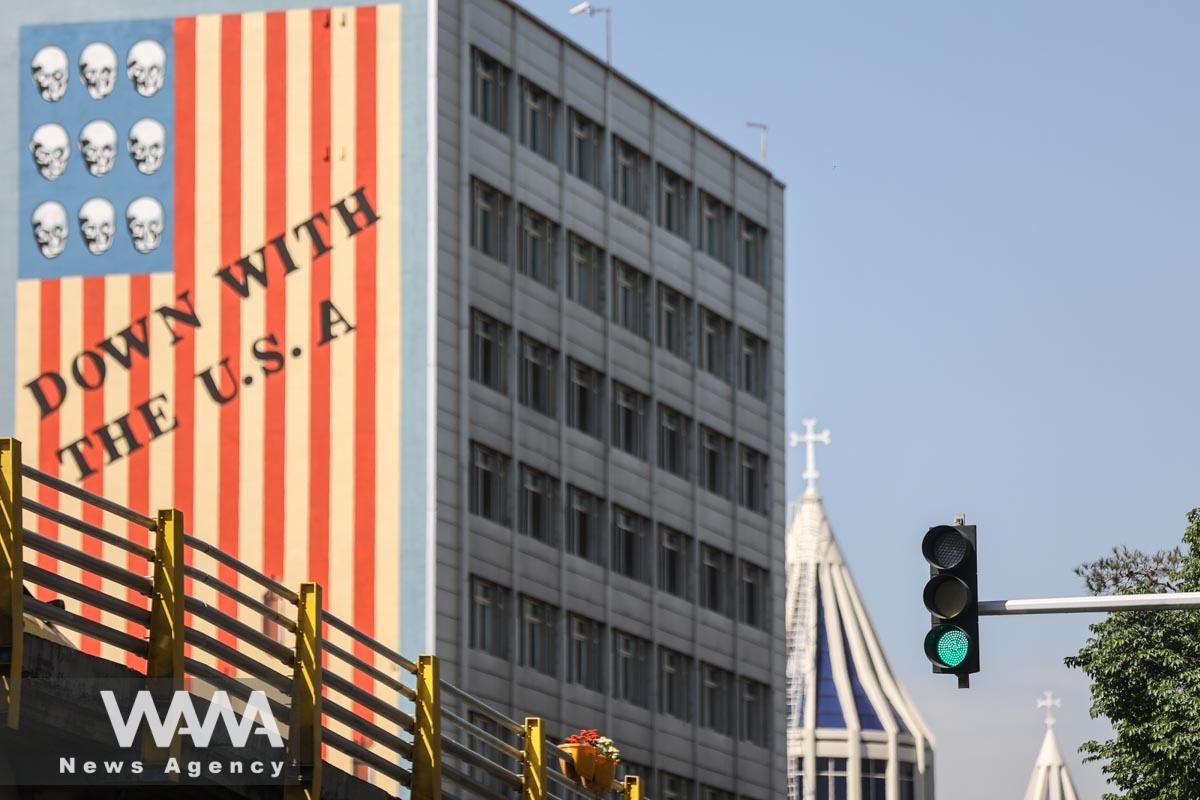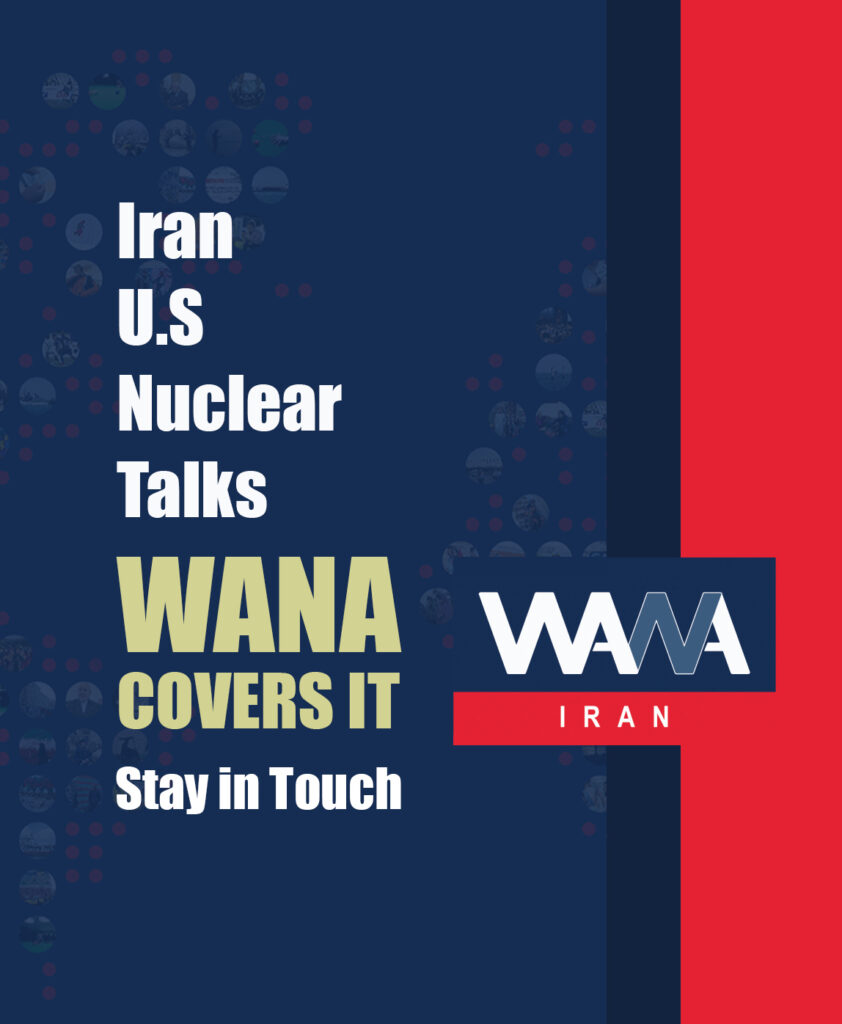Rome: A Shift in U.S. Tone, Firm Stance from Iran
WANA (Apr 19) – The second round of indirect talks between Iran and the United States was held today, April 19, 2025, in Rome. The negotiations, mediated by Oman, brought together delegations from both countries, including Seyed Abbas Araghchi and Steve Witkoff, in a four-hour session.
According to reports, this round had a noticeably different atmosphere compared to the first. One of the most striking elements was the U.S. delegation’s avoidance of reiterating its media talking points during the actual discussions—a shift interpreted by sources close to the negotiations as a sign of a more serious tone and a move into a new phase.
The discussions focused on two key areas:
1. Building Confidence Around the Peaceful Nature of Iran’s Nuclear Program
Iran reaffirmed that its nuclear activities are strictly peaceful and expressed readiness to dispel any doubts.
2. Effective Lifting of Sanctions by the U.S.
Iran demanded the removal of unlawful sanctions, backed by credible guarantees. Foreign Ministry spokesperson Esmaeil Baghaei stated: “Sanctions must be lifted decisively and with verifiable guarantees. Iran’s position on these two points remains firm and principled.”

A traffic light is seen next to an anti-U.S. mural on a building in Tehran, Iran, April 19, 2025. Majid Asgaripour/WANA (West Asia News Agency) via REUTERS ATTENTION EDITORS – THIS PICTURE WAS PROVIDED BY A THIRD PARTY
Before the talks began, Ali Shamkhani, senior political advisor to the Supreme Leader, posted on X that the Iranian team had arrived in Rome with full authority to negotiate—not for just any deal, but for a balanced one based on nine principles. These principles—seriousness, guarantees, balance, lifting of sanctions, rejection of the Libya/UAE model, avoidance of threats, urgency, containment of disruptors (like Israel), and facilitation of investment—serve as the backbone of Iran’s approach.
The message was clear: Iran came to reach a result, but not at any cost. As Shamkhani put it, “Iran seeks a balanced agreement, not surrender.”
As in past rounds, rumors swirled early on about whether the talks were direct or indirect. Al-Sharq’s Rome correspondent, Hiba Nasr, falsely claimed that U.S. and Iranian delegations were in the same room at the Omani embassy. In response, an informed source emphasized that media had no access to the venue, rendering such reports baseless.
The Iranian Foreign Ministry confirmed during the talks that the format remained the same as before: the two delegations were situated in separate rooms.

Iran and U.S. Negotiating Teams in Separate Rooms
WANA (Apr 19) – As part of ongoing efforts to ease tensions between Tehran and Washington, a new round of indirect talks between Iran and the United States began today at the Omani ambassador’s residence in Rome, the capital of Italy. The discussions are being held with the presence of Oman’s foreign minister and follow […]
One of the recurring red lines emphasized by Iran was its right to enrich uranium and preserve its nuclear capabilities. Baghaei made this unequivocally clear: “Iran’s nuclear program is entirely peaceful, and we’re ready to address any concerns. But safeguarding our technical and nuclear achievements is a non-negotiable requirement in these talks.”
He also stressed that sanctions relief must be definitive, verifiable, and backed by practical guarantees.
Another rumor claimed that Iran’s foreign minister temporarily suspended the talks for 15 minutes in response to the U.S. raising non-nuclear issues. This, too, was false. The talks proceeded without interruption. When the Iranian delegation left the room briefly for prayers, speculation about a suspension began to circulate.
The Foreign Ministry responded: “Such disinformation is not unusual. We’ve dealt with similar false narratives before. We remain committed to accurate information, and we’re focused on the work—unmoved by distractions—as we pursue the national interests of the Iranian people.”
No Interruption in #Iran–#US Negotiations
An IRIB correspondent in Rome reported: “There is a great deal of media noise and speculation around the talks. When the Iranian delegation steps out to pray, some outlets falsely report that…https://t.co/P0r4ll4KTS
— WANA News Agency (@WANAIran) April 19, 2025
Contrary to some predictions, neither Rafael Grossi from the IAEA nor J.D. Vance from U.S. played any role in this round. The meeting remained strictly political and diplomatic in nature.
Meanwhile, a few anti-Iranian opposition groups—reportedly encouraged by pro-Israeli circles—tried to organize a protest near the venue. The turnout was minimal and had no impact on the negotiations.
Analysts suggest that Tehran’s consistency has pushed Washington toward more realistic positions. Sources indicate that the overall framework of the talks is now nearly finalized, with negotiations entering a more technical and expert-level phase.
After today’s session, Araghchi stated: “Today’s negotiations were a step forward. Starting Wednesday, technical-level talks will continue in Oman, followed by the third round of political talks next Saturday.”
This transition to the expert phase suggests that the political groundwork may be complete, allowing negotiators to now focus on technical details.
“The Americans have so far not raised any issues unrelated to the nuclear topic.”
“We have stated that our negotiations are related to nuclear matters, and we do not accept any other topics.
_ Araghchi, #Iran‘s FM in Rome #America pic.twitter.com/9sPyRdZ2go— WANA News Agency (@WANAIran) April 19, 2025
Still, Iran’s foreign minister remained cautious, saying: “There’s no reason for excessive optimism or pessimism. We’re proceeding with caution. Hopefully, by next week, we’ll be in a better position to assess the prospects for an agreement.”
The Foreign Ministry also described the talks as “constructive and held in a positive atmosphere,” confirming that negotiations will resume at the expert level and later at the senior level starting next Saturday.
No one knows what next Saturday will bring. But it is clear that a negotiation process once clouded by uncertainty has now entered a new phase—with a clearer timeline and a more structured roadmap.
Iran has shown in Rome that it’s ready to engage in serious diplomacy without theatrics or noise—yet it remains unwavering on its principles. The question now is whether the U.S. is prepared to move beyond the past and commit to a genuine, balanced agreement.













